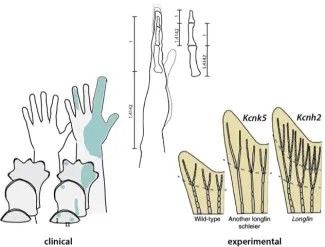
Regulation of size and proportion
The developmental mechanisms that generate form and function of our bodies are complex.
For example, consider the growth of our arm – the formation of this structure requires spatial and temporal regulation of growth and differentiation leading to proportional growth of the different tissues of our bones, circulation, nervous system and muscles that, only then, function together to allow movement and grasping function. This coordinated growth requires integrated regulation of cell-specific activities as well as inductive interactions among tissues during development. While many of these processes are specified via intrinsic cues in the particular structure, there is also integration of permissive extrinsic cues such as hormones that allow for relative growth of structures with the body. How coordinated growth is regulated and timed remains enigmatic. The signaling networks underlying this regulation may provide insight into dysregulated growth such as cancer as well as mechanisms for coordinated aspects of growth such as tissue regeneration and repair. We have identified specific cases in which growth in the zebrafish fin is dysregulated, but remains co-ordinated and proportional. Integration of this work with efforts to understand mechanisms of overgrowth due to somatic mosaic disorders, such as macrodactyly, will help refine the potential mechanisms and commonalities shaping these overgrowth conditions.